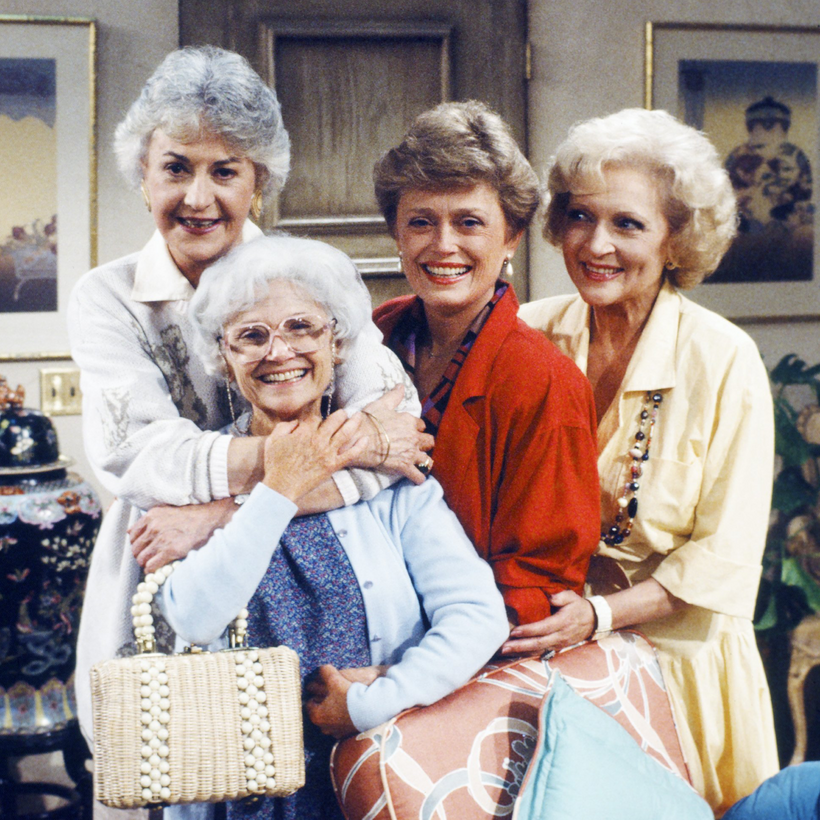Picture it: Queens, New York, 1988. A beautiful Sicilian-American city girl is sitting crisscross applesauce in her parents’ living room, adorned with 1980s kitsch, with a bowl of popcorn to her left. To her right, in a baby seat, is her newly hatched baby sister, whom the Sicilian-American girl is trying to ply with various forms of entertainment to keep her quiet.
The beautiful Sicilian-American city girl has other pressing matters at hand: it’s Saturday night, nine p.m., and her favorite television show is about to go on. Tonight’s episode is titled “My Brother, My Father,” and it features Angelo, the priest brother of one of the main characters, Sophia, coming all the way from Sicily to pay the family a visit.
Sophia’s daughter, Dorothy, must pretend to be married to her ex-husband, Stan, who happens to be the bane of her existence, having cheated on her with Chrissy, a flight attendant, years ago. Hilarity, naturally, ensues, especially when it’s revealed that Angelo never became a priest, having been lured away from the seminary by a beautiful peasant girl named Philomena.
For the next half-hour, the beautiful Sicilian-American city girl is guffawing hysterically at the television until the closing credits, and this would be a ritual that would repeat itself for the next two years, until the show sadly went off the air, in 1992.
Friends, that beautiful Sicilian-American city girl was me. And the show was The Golden Girls.
The city girl has pressing matters at hand: it’s Saturday night, nine P.M., and her favorite television show is about to go on.
At the time the show was in its first run, on NBC, I was younger than my youngest nephew is now. But unlike my youngest nephew, who was all but born with a smartphone in his hand, I was only exposed to the immediate world that was available in front of me on any given day.
And while I was—like most Sicilian-American girls—sheltered by parents who meant well enough, the nature of New York City and its boroughs, especially at that time, meant that I was exposed to certain concepts, ideas, and cultures long before my more suburban and rural peers were.
As a child, I thought it was totally normal that some men loved men like mommies and daddies loved each other, or that some mommies became mommies through artificial insemination, or that a Black woman could fall in love with a white man who was several years her junior—all storylines depicted with humor and grace on The Golden Girls, but whose concepts were totally foreign, as I would later find out, to those who didn’t have access to the concrete jungle and all its spoils and subcultures. And I didn’t realize, until much later, how uncommon tolerance and acceptance of different kinds of love were for those not born in cities like my own.
But that’s where The Golden Girls came in.
My research for my new book, The Golden Girls: A Cultural History, revealed that the show—especially when viewed against the backdrop of the Reagan era—was not only responsible for helping us, as a society, accept the idea of multi-dimensional vivacious women over 50 (instead of putting them out to pasture at 25), but also for ushering in a better understanding, and ultimately acceptance, of people and concepts that Reagan and his ilk actively and virulently denigrated. Gay men. Gay women. Trans men and women. People in inter-racial relationships.
Really, any permutation of the “unconventional” family structure that bucked the husband-wife-2.3-kids-and-a-dog standard set by a G.O.P. dystopia that was just as odious then as it is now.
Perhaps most poignantly, my research revealed just how important The Golden Girls was for queer men and women in the 1980s, showing that they had aunties and “mothers” (take your pick of whether that meant in the traditional or the ballroom sense) and, in a very real way, a whole family that provided them with love, respect, and acceptance—all sorely needed, especially as AIDS decimated their communities and the deaths were met with derision by the noxious Reagan administration.
In the 21st century, as a certain subsection of the country ramps up its increasingly vile attacks on women’s rights, queer rights, and children’s rights, The Golden Girls, and its lessons of love, family, and acceptance, are more important than ever.

Bernadette Giacomazzo’s The Golden Girls: A Cultural History is out now from Rowman & Littlefield


